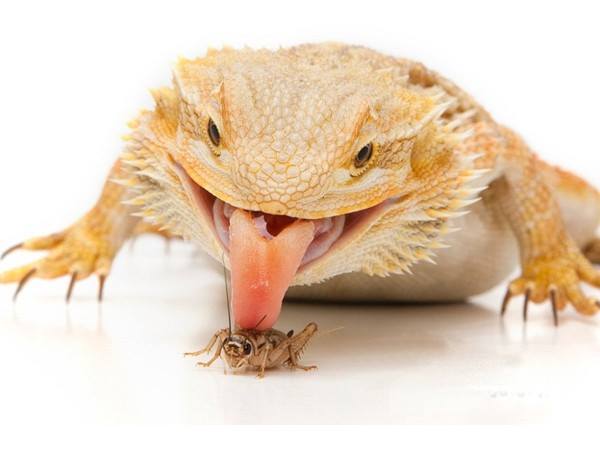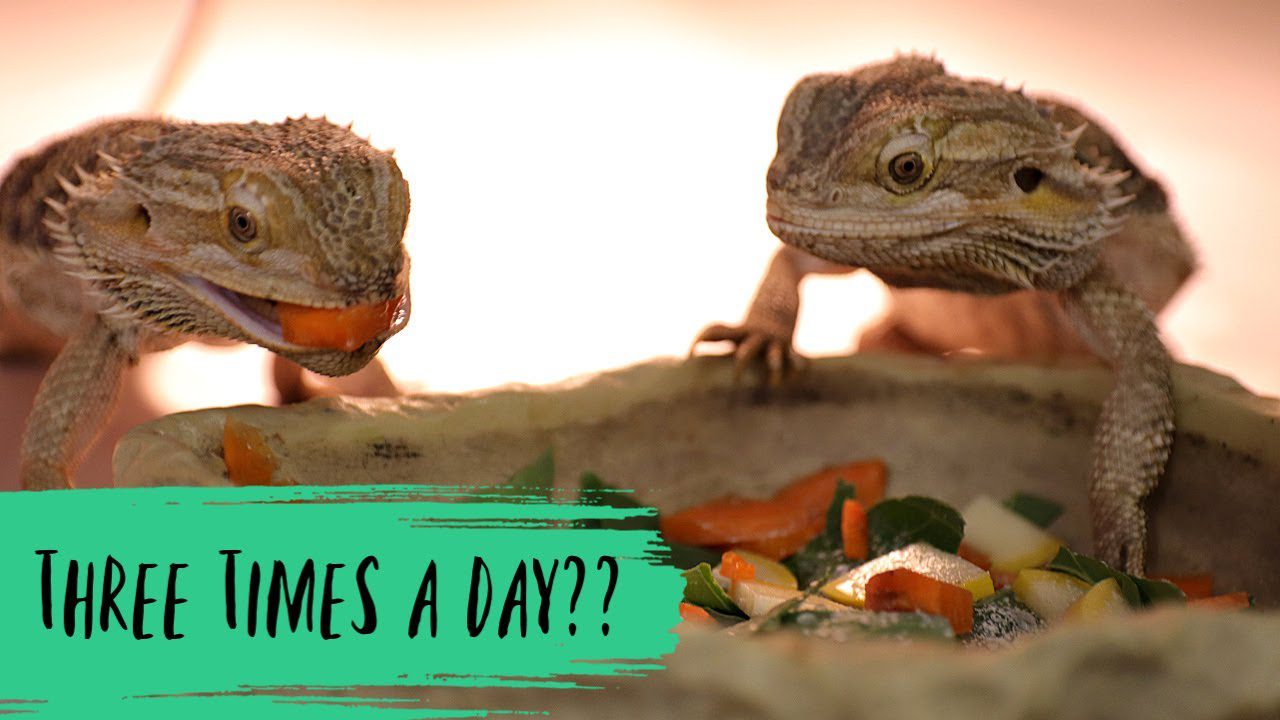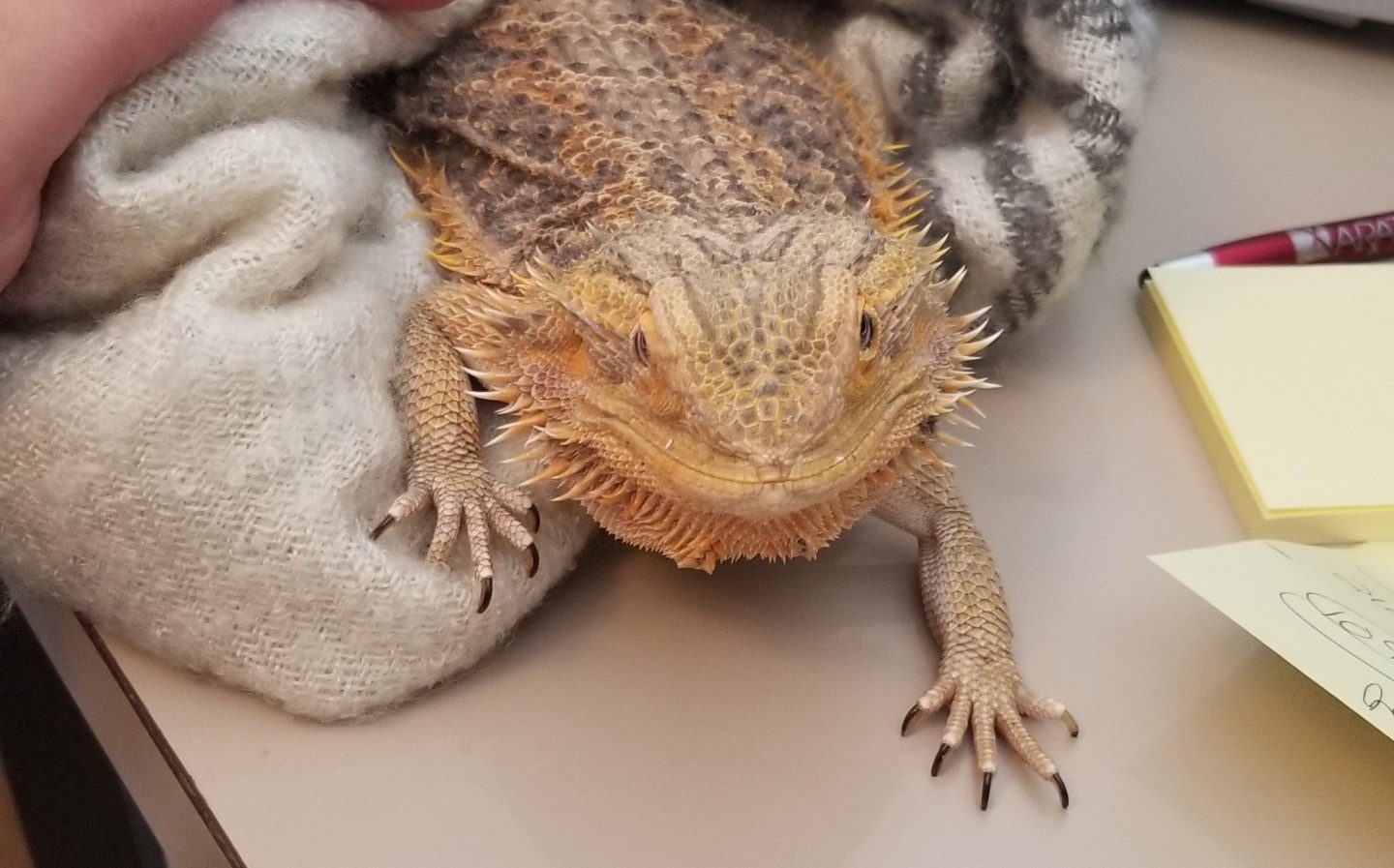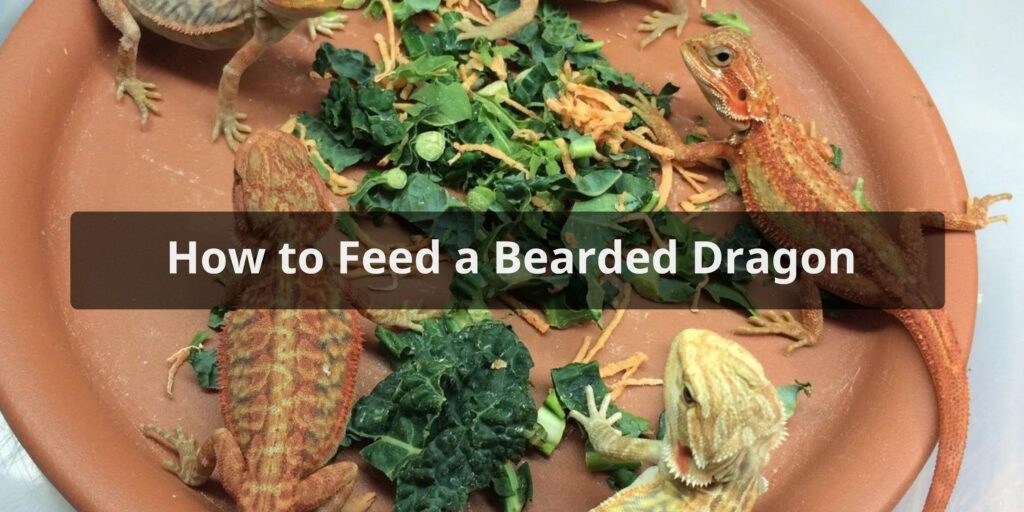Bearded dragons make great pet reptiles. They are docile, easy to handle, and have endearing personalities. However, caring for a bearded dragon does require some specialized knowledge, especially when it comes to their diet and feeding requirements. Proper diet and nutrition are essential for maintaining your bearded dragon’s health. Here is a guide on how to feed bearded dragon.
Bearded dragons are omnivores, meaning they eat both plant and animal matter. In captivity, they should be fed a varied diet consisting of insects, vegetables, and some fruits. It is important to feed them the right kinds of foods in the right amounts to meet their nutritional needs. Additionally, special care must be taken to feed them properly sized meals at the right intervals. With the right diet and proper feeding techniques, you can keep your bearded dragon healthy and happy.
Feed Live Insects

The staple of a bearded dragon’s diet should consist of live insects. In the wild, bearded dragons are very active foragers and hunters of insects. Some good options include:
- Crickets – A staple feeder insect that is readily available. Make sure they are not too large.
- Mealworms – High in protein and calcium. But feed in moderation as they are high in fat.
- Superworms – Similar nutrition profile as mealworms. Good treat insect.
- Dubia roaches – Excellent source of protein. Cannot climb smooth surfaces or fly.
- Black soldier fly larvae – A great calcium-rich feeder insect.
Young dragons should get 50-60% of their diet from insects, or as much as they can eat in a 10-15 minute period 2-3 times per day. Adults can eat insects about 1-2 times per day. Gut load insects with high calcium, low phosphorus gut loading formula for added nutrition. Dust insects with calcium powder before feeding.
Offer Chopped Vegetables
40-50% of a bearded dragon’s diet should consist of chopped vegetables and leafy greens. Good options include:
- Kale
- Collard greens
- Mustard greens
- Dandelion greens
- Squash
- Carrots
- Sweet potato
Chop vegetables into bite sized pieces. Vegetables should be offered 1-2 times per day. Dust them lightly with calcium powder 2-3 times a week.
Fruits and Treats

Fruits should only make up about 10% of a bearded dragon’s diet. Good options include blueberries, strawberries, mango, and apricots. Treats like live hornworms can also be given occasionally. Overfeeding fruits and treats can lead to obesity and other health issues.
Feeding Techniques
- Use shallow dishes for insects and vegetables to prevent live insects from crawling away.
- Do not feed insects from your hands as it can lead to accidental biting. Use tweezers or tongs instead.
- Only leave vegetables in the enclosure for a couple hours to prevent spoilage.
- Remove any uneaten insects within 30 minutes.
- Clean food dishes regularly with hot water and pet-safe disinfectant.
Feeding Schedule

- Young bearded dragons should get 3 feedings per day. Space out insect and vegetable feedings.
- Adult bearded dragons can be fed 1-2 times per day.
- Feed adult bearded dragons 80% vegetables, 15% insects, and 5% fruits/treats.
- Soak vegetables in water to increase hydration.
- Always provide fresh, clean water.
Conclusion
Providing proper nutrition is key to keeping a bearded dragon healthy. Feed them a varied diet consisting primarily of insects and vegetables. Use good feeding techniques to prevent issues like impaction. Adjust food amounts and frequency based on the dragon’s age. With the right diet and smart feeding practices, your bearded dragon will thrive. Consult an exotic veterinarian if you have any concerns about your dragon’s diet or health.
FAQs About How to Feed Bearded Dragon
How often should I feed my bearded dragon?
Bearded dragons should be fed daily when they are juveniles and gradually transitioned to an adult feeding schedule of every other day. This ensures they receive the nutrients they need while preventing overfeeding and obesity.
Can bearded dragons eat live insects?
Yes, bearded dragons can and should eat live insects as a primary part of their diet. Insects like crickets, mealworms, dubia roaches, and phoenix worms are suitable options. Live insects provide essential protein and mental stimulation through hunting.
What types of insects are suitable for their diet?
A variety of insects can be part of a bearded dragon’s diet. Common options include crickets, roaches, mealworms, superworms, and silk worms. Providing a diverse selection helps ensure a well-rounded nutritional intake for your bearded dragon.
Should I provide vegetables and fruits to my bearded dragon’s diet?
Yes, vegetables and fruits are important components of a bearded dragon bearded dragon’s diet, especially for juveniles. Offer a mix of leafy greens like collard greens and dandelion greens, along with small amounts of fruits like berries. These provide vitamins and fiber.
How do I dust or gut-load insects for optimal nutrition?
To enhance the nutritional value of insects, dust them with calcium and vitamin D3 supplements before feeding. Gut-loading involves feeding the insects a nutritious diet for 24-48 hours before offering them to your bearded dragon. This ensures that the bearded dragon receives well-fed and nutrient-rich prey.
{
“@context”: “http://schema.org”,
“@type”: “Article”,
“headline”: “Feeding Bearded Dragon Geckos: Tips and Guidelines”,
“description”: “Learn about the feeding schedule, suitable insects, and the importance of vegetables and fruits in the diet of bearded dragon geckos. Discover how to enhance insect nutrition through dusting and gut-loading.”,
“articleSection”: [
{
“@type”: “HowToSection”,
“name”: “How often should I feed my bearded dragon gecko?”,
“itemListElement”: [
{
“@type”: “HowTo”,
“name”: “Bearded dragon geckos should be fed daily when they are juveniles and gradually transitioned to an adult feeding schedule of every other day. This ensures they receive the nutrients they need while preventing overfeeding and obesity.”
}
]
},
{
“@type”: “HowToSection”,
“name”: “Can bearded dragon geckos eat live insects?”,
“itemListElement”: [
{
“@type”: “HowTo”,
“name”: “Yes, bearded dragon geckos can and should eat live insects as a primary part of their diet. Insects like crickets, mealworms, dubia roaches, and phoenix worms are suitable options. Live insects provide essential protein and mental stimulation through hunting.”
}
]
},
{
“@type”: “HowToSection”,
“name”: “What types of insects are suitable for their diet?”,
“itemListElement”: [
{
“@type”: “HowTo”,
“name”: “A variety of insects can be part of a bearded dragon gecko’s diet. Common options include crickets, roaches, mealworms, superworms, and silk worms. Providing a diverse selection helps ensure a well-rounded nutritional intake for your gecko.”
}
]
},
{
“@type”: “HowToSection”,
“name”: “Should I provide vegetables and fruits to my gecko’s diet?”,
“itemListElement”: [
{
“@type”: “HowTo”,
“name”: “Yes, vegetables and fruits are important components of a bearded dragon gecko’s diet, especially for juveniles. Offer a mix of leafy greens like collard greens and dandelion greens, along with small amounts of fruits like berries. These provide vitamins and fiber.”
}
]
},
{
“@type”: “HowToSection”,
“name”: “How do I dust or gut-load insects for optimal nutrition?”,
“itemListElement”: [
{
“@type”: “HowTo”,
“name”: “To enhance the nutritional value of insects, dust them with calcium and vitamin D3 supplements before feeding. Gut-loading involves feeding the insects a nutritious diet for 24-48 hours before offering them to your gecko. This ensures that the gecko receives well-fed and nutrient-rich prey.”
}
]
}
]
}



